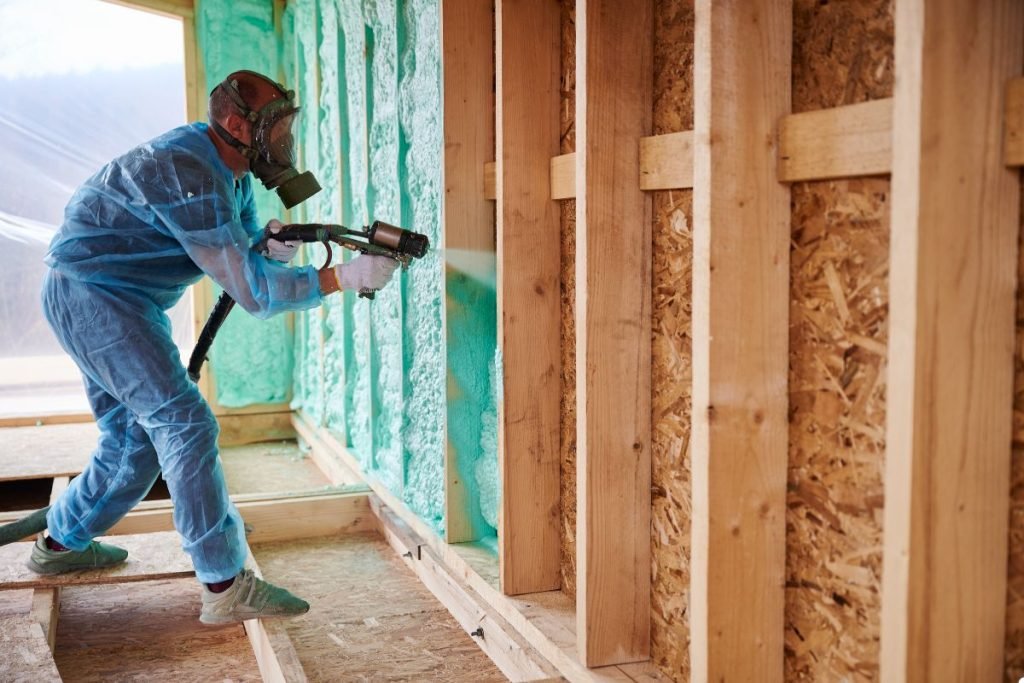
Are you looking to boost your home’s energy efficiency, improve air quality, and lower your utility bills? Spray foam insulation might be the answer. This comprehensive guide covers everything US homeowners need to know about spray foam, from understanding its types and benefits to navigating costs and selecting the right contractor. Call us today to learn more and get a free estimate!
What is Spray Foam Insulation?
Spray foam insulation is a popular choice for homeowners seeking superior insulation solutions. Unlike traditional fiberglass or cellulose insulation, spray foam forms an airtight seal, preventing air leakage and minimizing heat transfer. This results in significant energy savings and a more comfortable living environment. Spray foam is applied as a liquid that expands and hardens, filling cracks and services that traditional insulation often misses.

Understanding Spray Foam
There are two primary types of spray foam insulation: open-cell and closed-cell.
- Open-Cell Spray Foam: This type is lightweight and less dense, offering good insulation value (typically around R-3.5 per inch). Open-cell foam is more affordable and expands significantly, making it suitable for filling large cavities. It’s often used in interior walls and attics.
- Closed-Cell Spray Foam: This is a denser, more rigid type with a higher R-value (around R-6 to R-7 per inch). Closed-cell foam provides excellent insulation and also acts as a moisture barrier. Its strength makes it ideal for exterior walls, crawl spaces, and roofs. It can even add structural integrity to the building.
Benefits of Spray Foam
Spray foam insulation offers numerous benefits for homeowners:
- Energy Efficiency: By creating an airtight seal, spray foam minimizes air leakage, reducing heating and cooling costs. Many homeowners see significant reductions in their monthly energy bills.
- Improved Air Quality: Spray foam prevents drafts and the infiltration of allergens, dust, and pollutants, leading to improved indoor air quality. This is particularly beneficial for individuals with allergies or respiratory problems.
- Moisture Control: Closed-cell spray foam acts as a moisture barrier, preventing water damage and mold growth. Open-cell is moisture permeable, so installation should be done correctly and kept away from standing water or areas prone to leaks.
- Soundproofing: Spray foam helps to dampen sound transmission, creating a quieter and more peaceful living environment.
- Increased Home Value: Homes with spray foam insulation are often more attractive to potential buyers due to their energy efficiency and comfort.
Cost Considerations
Spray foam insulation costs more than traditional insulation materials, but the long-term benefits often outweigh the initial investment.
- Factors Affecting Price: The cost of spray foam depends on several factors, including the type of foam, the area to be insulated, and the complexity of the installation.
- DIY vs. Professional Installation: While DIY spray foam kits are available, professional installation is generally recommended to ensure proper application and avoid potential problems.
- Long-Term Savings: The energy savings provided by spray foam can result in significant cost savings over the lifespan of your home, making it a worthwhile investment.
Choosing the Right Spray Foam Contractor
Selecting a qualified and experienced contractor is crucial for a successful spray foam insulation project:
- Licensing and Insurance: Ensure that the contractor is properly licensed and insured to protect yourself from liability.
- Experience and Reputation: Look for a contractor with a proven track record and positive reviews from previous customers.
- Reviews and Testimonials: Check online reviews and ask for references to get a sense of the contractor’s quality of work.
- Getting Multiple Quotes: Obtain quotes from multiple contractors to compare prices and attic insulation services etc.

Installation Process
Understanding the installation process can help you prepare for the project:
- Preparation: The area to be insulated will be prepped by removing any existing insulation and sealing any cracks or gaps.
- Application: The spray foam is applied by a trained technician using specialized equipment.
- Curing and Ventilation: The foam needs to cure and properly ventilation after installation.
Common Spray Foam Problems & Solutions
While spray foam is a great option, here are some potential issues:
- Off-Gassing: Ensure proper ventilation.
- Shrinkage: Hire an experienced contractor for proper application.
- Odor Problems: Ensure the mixture is correct
Environmental Impact & Sustainability
Spray foam does have environmental considerations:
- Environmental Benefits: The R-value can assist you to reduce pollution from excess heating.
- Responsible Disposal: Responsible disposal or recycling is important with spray foam.
- Sustainable Options: Choose sustainable options for a greener future! Contact us today to make an eco-friendly impact.
Frequently Asked Questions (FAQs)
Is spray foam insulation safe?
Yes, when properly installed and cured.
How long does spray foam insulation last?
It can last for the life of the building.
Does spray foam insulation increase home value?
Yes, it can improve the attractiveness to potential buyers.
Can I install spray foam insulation myself?
Not recommended unless you’re experienced.
What is the difference between open-cell and closed-cell spray foam?
Open-cell is lighter and less expensive, closed-cell is denser and a moisture barrier.
Does spray foam help with soundproofing?
Yes, it helps reduce noise transmission.
